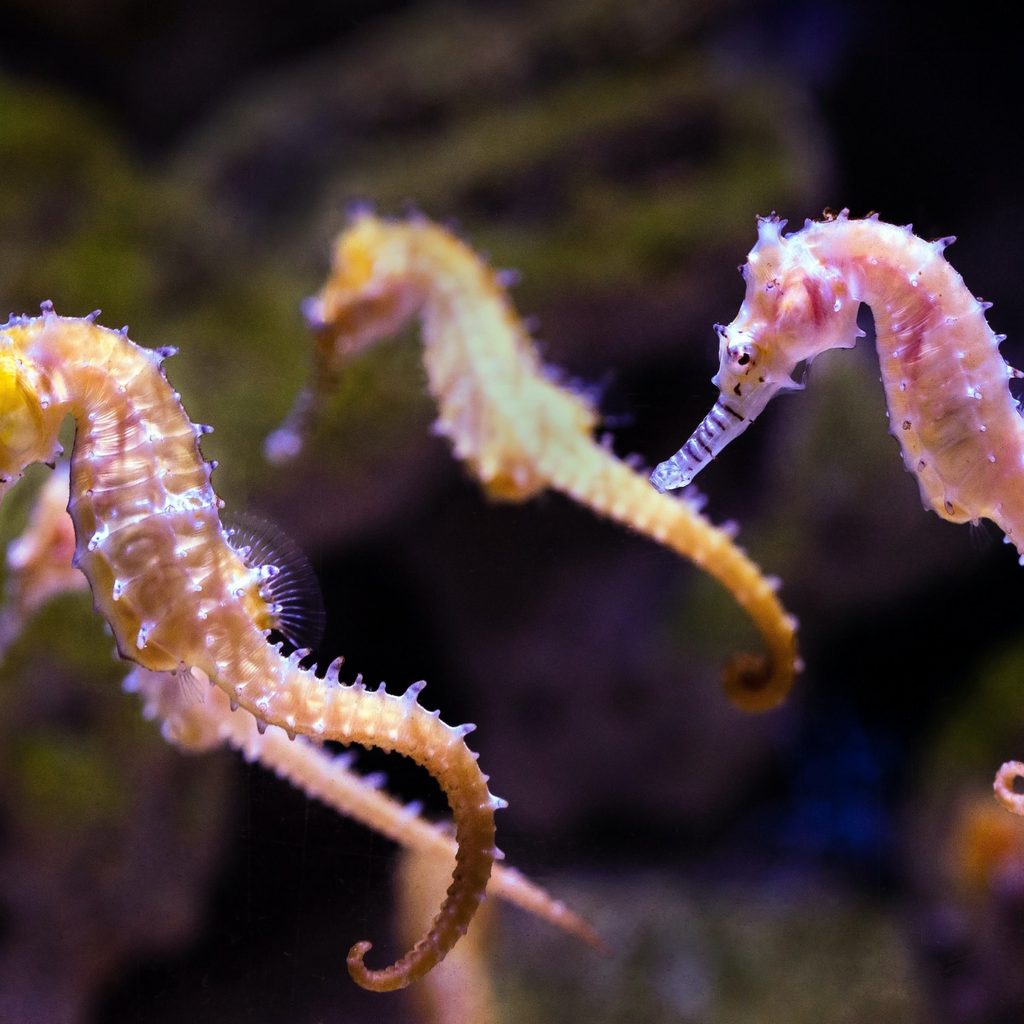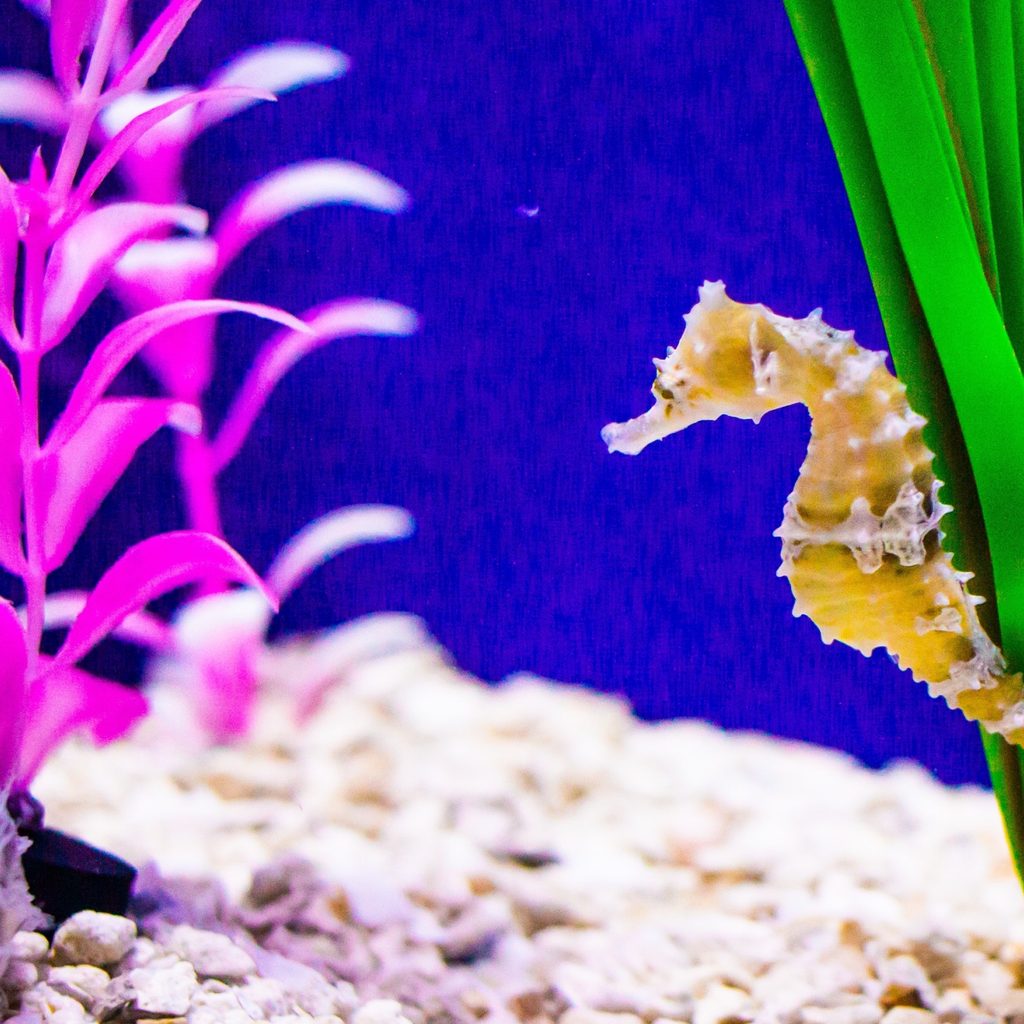Interested in a saltwater aquarium but not looking to raise a Nemo? Seahorses make a great aquatic pet for anyone who wants to try something different. These tiny and majestic creatures actually belong to the fish family, but you’ll surely notice they don’t resemble the usual pet swimmer. With a head shaped like a horse’s, a small pouch for their young, and a prehensile tail, they could potentially be known as sea monkeys or sea koalas. While you’ll certainly enjoy watching your new seahorses swim gracefully in their tank, these guys can be a bit finicky and need a vigilant owner to consistently keep their aquarium at the perfect temperature with high water quality. Here’s how to make sure your new sea-koala-monkey-horse stays happy.

Should you get a seahorse?
Seahorses come in more than 40 species but only a few that we can keep as pets. The setup for their habitat will be extremely similar to other saltwater tanks, and aquarium pros will enjoy branching out into this different type of fish. Let’s face it, the big appeal of seahorses is the mega cuteness and the fun you get watching them. In addition to the usual tank setup, you’ll need a hitching post for your new pet to wrap his fingerlike tail around. For extra fun, install a plant instead that he can catch onto. On the flip side, you have to be extremely careful that he won’t accidentally catch on any other part of the tank like a piece of your filtration system. Because seahorses in aquariums can live up to five years, you’ll need to ensure you’re ready for the commitment.

What type of aquarium do you need?
Your pet seahorse requires a unique environment, which is why we don’t recommend housing him with a large group of other fish or with most corals. These placid animals like to keep things chill and won’t do well in a tank with an overactive filter. Of course, you still need to clean the water, but get a filter that lets you adjust as needed. You might also have more luck with a hanging filter, rather than a submersible one. For a pair of seahorses, you should look for a 20- to 30-gallon tank at minimum. They thrive in a low-temperature (for a tropical fish, that is) and high-pH environment, so ensure your tank is below 75 degrees and just above 8.0 pH value. Many owners select a vertical tank, as your seahorse couple will enjoy swimming up from post to post. If you get a male and female, prepare for the inevitable offspring. A same-sex pair will get along fine.
You’ll need to think carefully before adding other species to your seahorse aquarium. Any fish with an aggressive side will be too much for these timid critters. Even though seahorses can’t live with just anyone, there are a couple of other aquatic animals that will befriend a seahorse. Look for peaceful fish, like gobies, to be their tankmates. Any time you add fish, you must adjust the size and filter for your new school. Plan carefully to avoid overcrowding, which can quickly create a hazardous environment in the aquarium.
How should you feed a seahorse?
Unlike many other fish, seahorses won’t eat pellets or flakes happily. They much prefer to catch their prey, though frozen will work for most of these pets. You’ll have to figure out a good system since food preference can vary depending on the species and temperament of your animal. He’ll probably enjoy very tiny crustaceans like shrimp, and will likely want to eat multiple times per day. Feeding once per day almost never satiates this fish, so be mindful about maintaining a schedule. Sprinkle in weekly treats, such as different types of shrimp that aren’t his usual diet. You may also need to supplement with vitamins that can be added to food to keep your seahorse healthy.
Remember to always research your local pet or aquarium store before heading in or find a reputable online breeder. Ask where they get their seahorses to ensure they’ve been captive-bred and are not wild-caught. Check his eyes for clarity and give his little tail a good look. If he’s hitching properly, swimming lazily, and eating excitedly, you’re looking at a happy seahorse.



